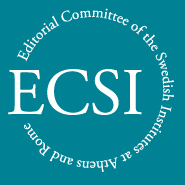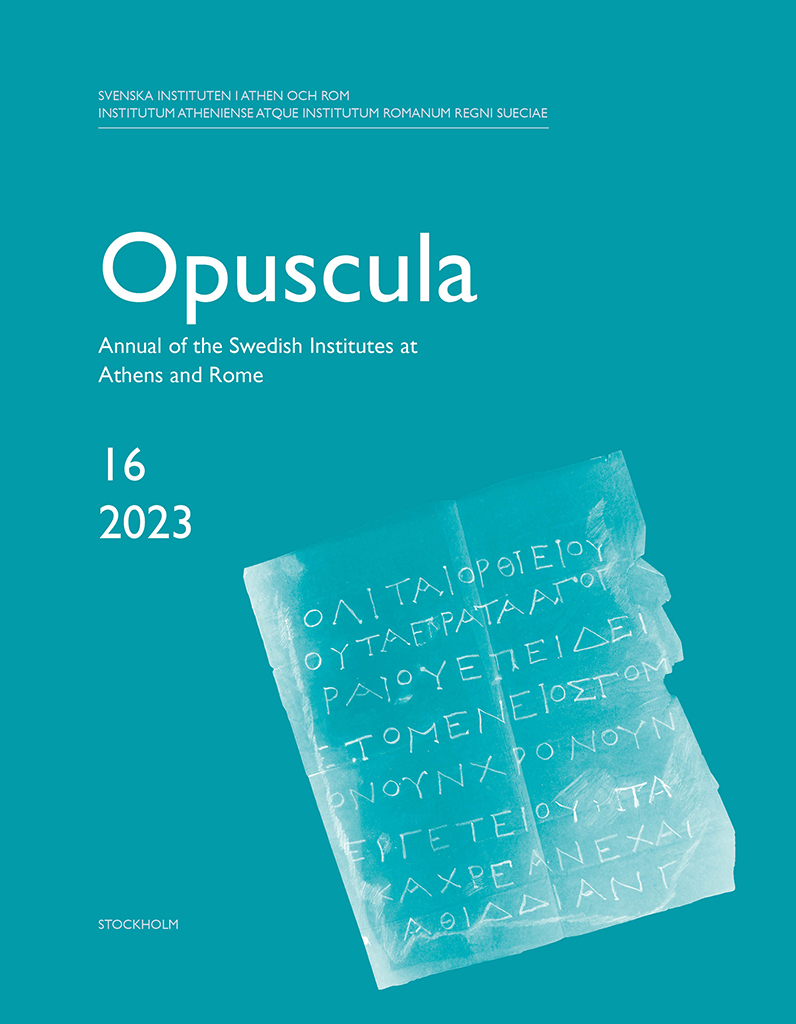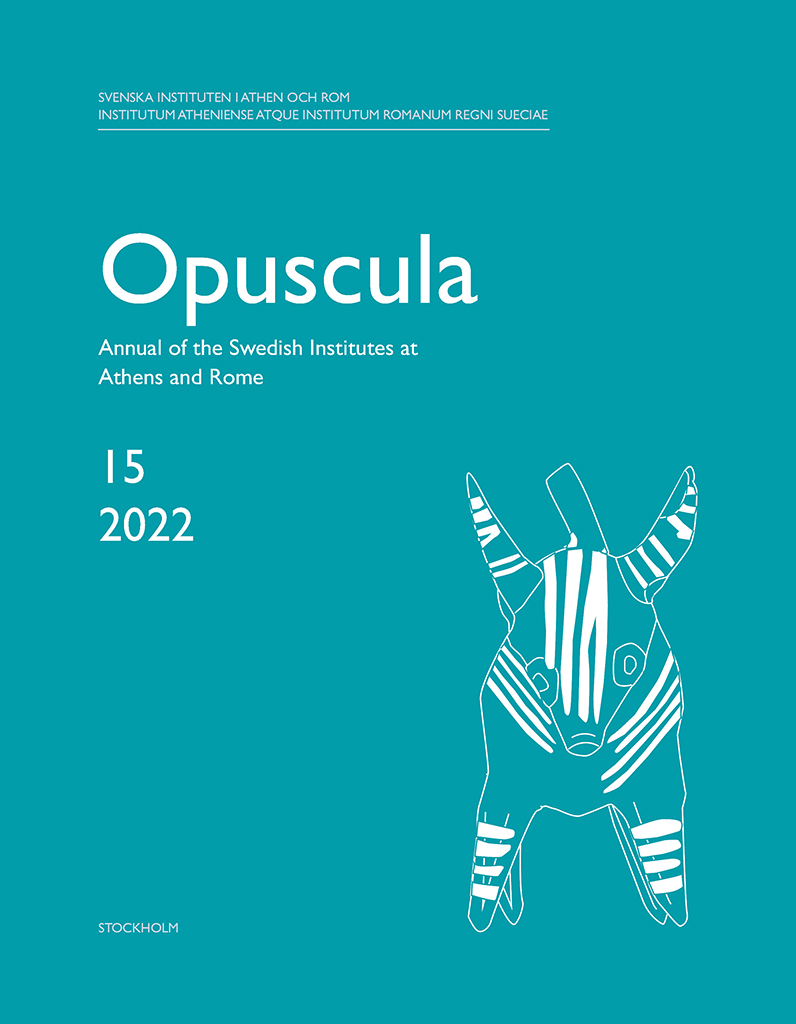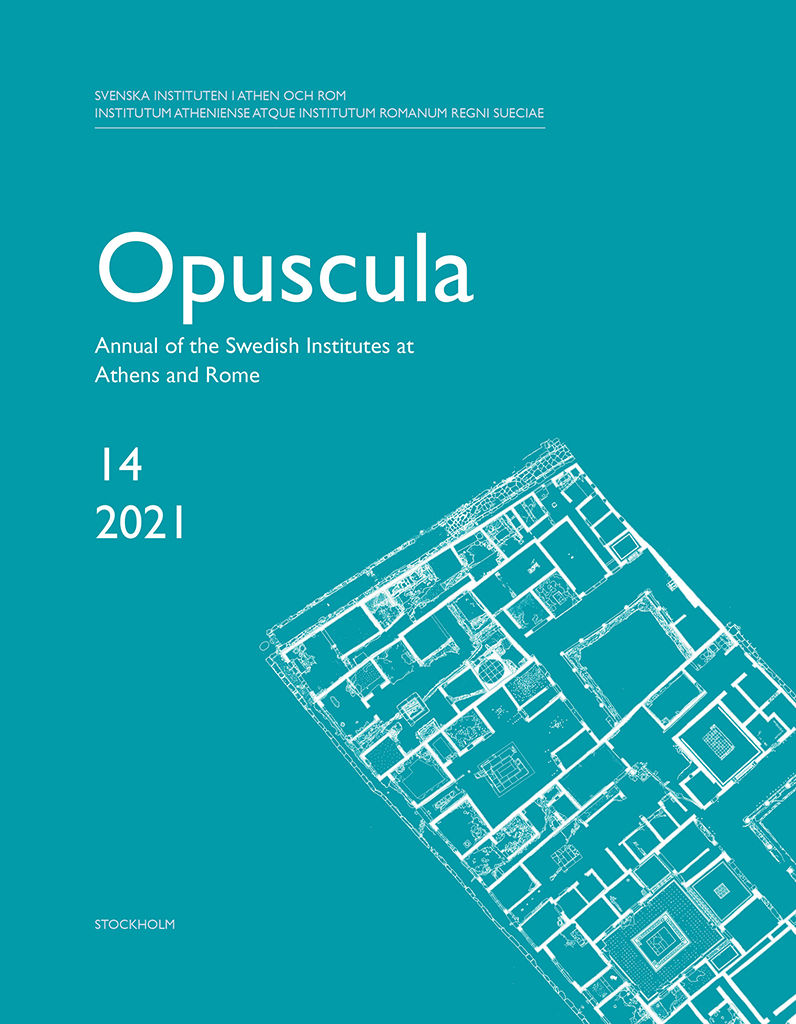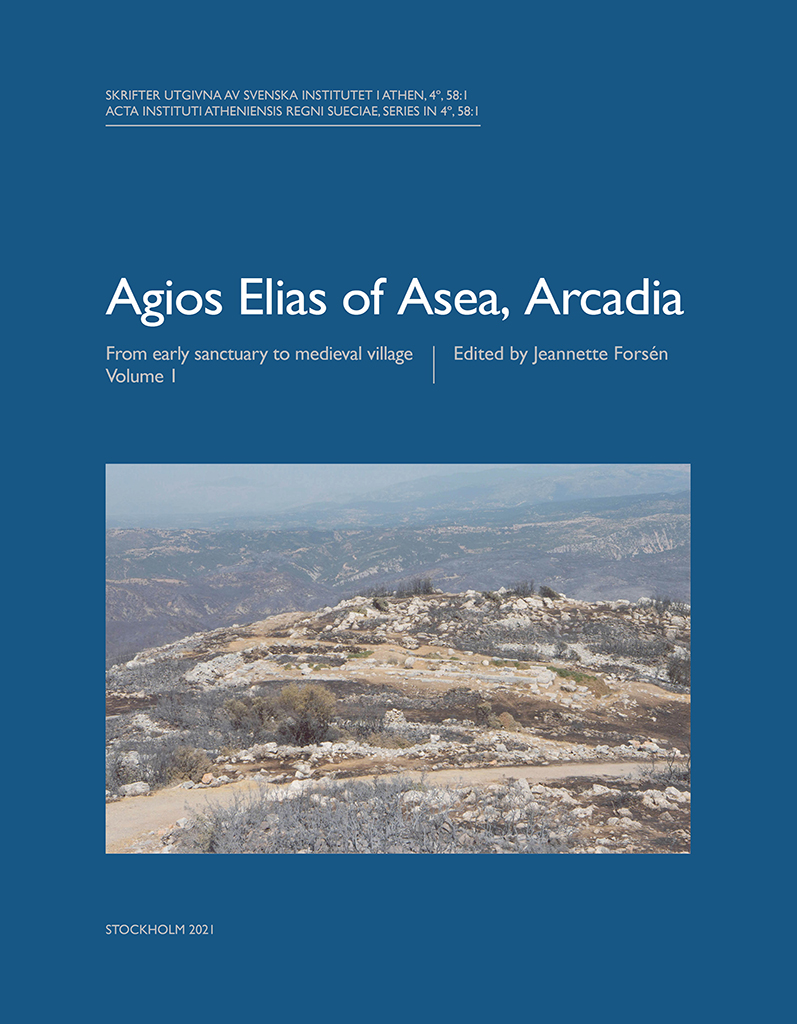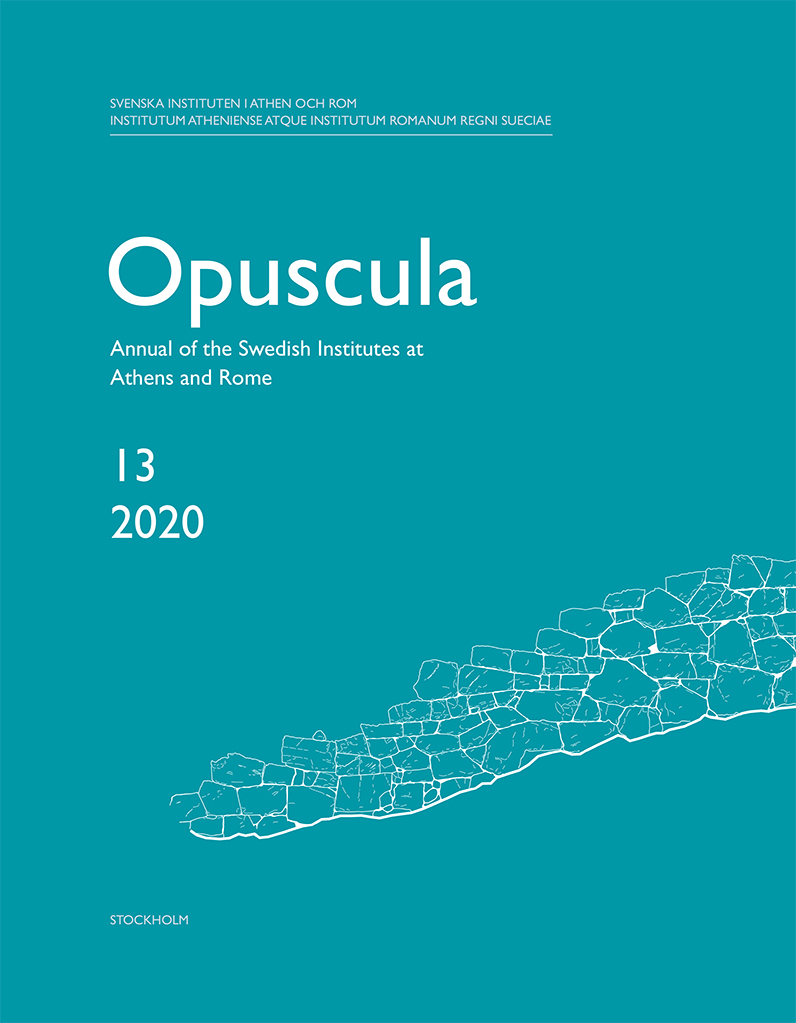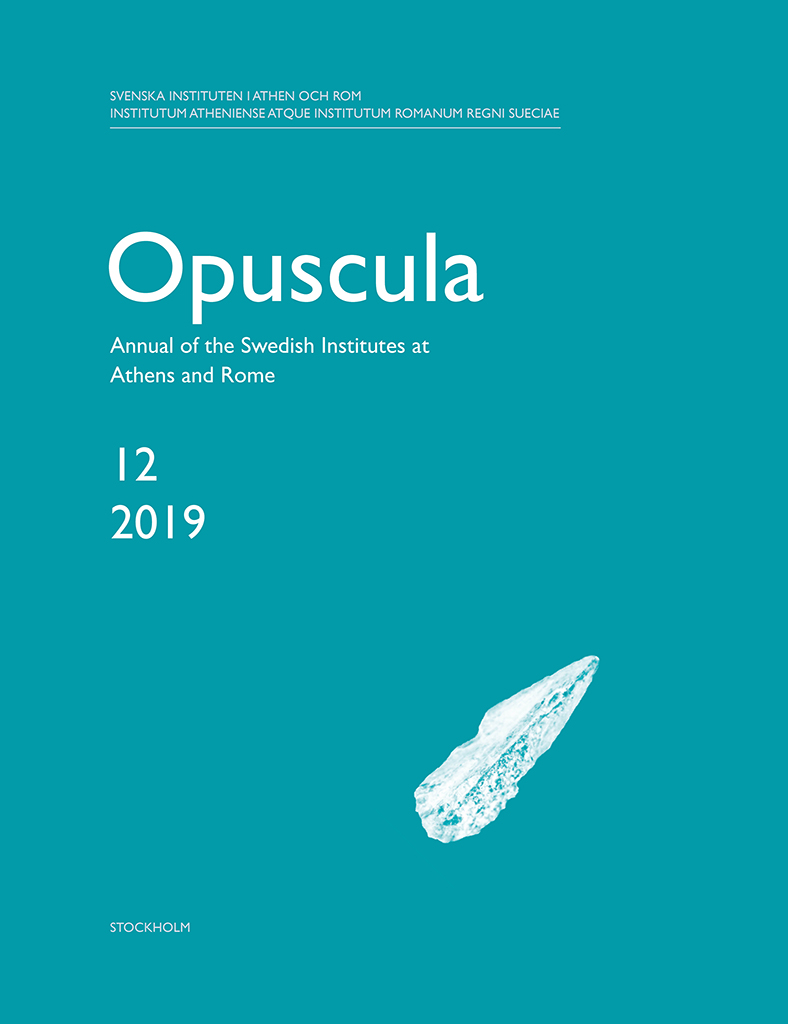Opuscula is published by the Swedish Institutes at Athens and Rome, with the aid of a grant from the Swedish Research Council. Distributed by Eddy.se AB. View journal at ERIH PLUS. All content available with open access. The Palamas Archaeological Project 2023. A preliminary report of the Greek–Swedish collaboration in the municipality of Palamas, region of Karditsa, Thessaly By Maria Vaïopoulou (Ephorate of Antiquities of Karditsa), Robin Rönnlund (University of Thessaly & Swedish Institute at Athens), Fotini Tsiouka (Ephorate of Antiquities of Karditsa), Johan Klange (Halland Museum of Cultural History), Derek Pitman (Bournemouth University), Ian Randall (University of British Columbia), Rich Potter (University of Gothenburg), Harry Manley (Bournemouth University) Abstract The 2023 fieldwork in the area of Palamas, Thessaly, was severely hampered by catastrophic weather events affecting the area. In spite of this, the project managed to conduct excavations, surface and architectural surveys, as well as geophysical prospection at a number of sites in the region. The work continues to highlight the chronological breadth of archaeological remains in the area, as well as further details regarding little-known periods of Thessalian history. Bibliographical information Maria Vaïopoulou, Robin Rönnlund, Fotini Tsiouka, Johan Klange, Derek Pitman, Ian Randall, Rich Potter & Harry Manley, ‘The Palamas Archaeological Project 2023. A preliminary…
Opuscula is published by the Swedish Institutes at Athens and Rome, with the aid of a grant from the Swedish Research Council. Distributed by Eddy.se AB. View journal at ERIH PLUS. All content available with open access. The Palamas Archaeological Project. A preliminary report of the 2022 fieldwork conducted by the ongoing Greek–Swedish archaeological field programme in Palamas, region of Karditsa, Thessaly By Maria Vaïopoulou, Robin Rönnlund, Fotini Tsiouka, Johan Klange, Derek Pitman, Rich Potter, Ian Randall, Harry Manley, Elisabet Schager, Sotiria Dandou & Lewis Webb Abstract This paper presents the preliminary results from the 2022 fieldwork of the Palamas Archaeological Project, an ongoing Greek–Swedish collaboration in the region of Karditsa, Thessaly. Working over the course of two separate field seasons, the project team conducted aerial, architectural, fieldwalking, and geophysical surveys at a number of sites within the survey area, including at the important multi-phase fortified settlements at Metamorfosi and Vlochos. Limited excavations were also conducted at the latter site, producing new evidence for the Hellenistic and Early Byzantine phases of the ancient city, including a probable cemetery. The work continues to add to the knowledge of the archaeology of the region, highlighting the long and dynamic history of human habitation in western…
Opuscula is published by the Swedish Institutes at Athens and Rome, with the aid of a grant from the Swedish Research Council. Distributed by Eddy.se AB. View journal at ERIH PLUS. All content available with open access. Roman and Early Byzantine evidence from the area of Palamas. A preliminary report of the ongoing Greek-Swedish archaeological work in the region of Karditsa, Thessaly By Maria Vaïopoulou, Robin Rönnlund, Fotini Tsiouka, Johan Klange, Derek Pitman, Sotiria Dandou, Rich Potter, Lawrence Shaw, Lewis Webb, Stelios Ieremias, Ian Randall & Harry Manley Abstract This paper presents preliminary results of the Palamas Archaeological Project relating to the Late Roman and Early Byzantine periods in the study area in western Thessaly, Greece. These periods are comparatively understudied in Thessaly, and the aim of this work is to highlight the extent of the material and the potential of investigating the archaeology of Late Antiquity in the region. The work was centred on excavations and survey at the site at Vlochos, alongside architectural survey at the neighbouring site on Kourtikiano hill. The paper also presents studies into Late Roman and Early Byzantine material found during cleaning at Vlochos. Additionally, an unpublished inscription spoliated in a church in nearby…
Opuscula is published by the Swedish Institutes at Athens and Rome, with the aid of a grant from the Swedish Research Council. Distributed by Eddy.se AB. View journal at ERIH PLUS. All content available with open access. The Kalaureia Excavation Project. A preliminary report of the work carried out in Area L between 2015 and 2018 By Anton Bonnier (Uppsala University, Sweden), Therese Emanuelsson-Paulson (Stockholm University, Sweden), Dimitra Mylona (INSTAP Study Center for East Crete, Greece) & Arto Penttinen (Swedish Institute at Athens, Greece) Abstract The report presents a summary and preliminary discussion on the work carried out by the Swedish Institute at ancient Kalaureia between 2015 and 2018 in Area L. The excavations were focused on this area with the hopes of gaining a better understanding of the settlement which was situated south of the Sanctuary of Poseidon in antiquity. The excavations show that a large building was constructed probably around the middle of the 4th century BC in the western part of Area L. The full outline and functional use of the building has not yet been fully established but the building seems to have been in use in several subsequent phases. The excavated remains further suggest that…
Published by the Swedish Institute at Athens. Distributed by Eddy.se AB. Agios Elias of Asea, Arcadia Vol. 1. Agios Elias of Asea, Arcadia. From early sanctuary to medieval village Edited by Jeannette Forsén Abstract A brief four-week excavation campaign in 1997 at the temple on top of the mountain of Agios Elias at Asea produced abundant archaeological material which partly is presented in this study, along with a stratigraphic report of part of the excavated area. The pottery, miniature vessels, miscellaneous terracotta finds, roof tiles, faunal and human bones, glass, coins, sculpture and miscellaneous stone objects are included in the present work. The first focus of activities at the site took place around c. 720–690 BC (Early Protocorinthian). No architecture was found in connection with this period. However, roof tiles of a temple and some auxiliary buildings from c. 590–560 BC (Middle Corinthian–Late Corinthian I) are accompanied by a large amount of pottery which point at a second floruit of the site during this period. Some of the pottery is local/regional, with other examples originating from many parts of southern Greece in addition to Attica and possibly East Greece as well. During the 14th century AD a village, named Kandreva,…
Opuscula is published by the Swedish Institutes at Athens and Rome, with the aid of a grant from the Swedish Research Council. Distributed by Eddy.se AB. View journal at ERIH PLUS. All content available with open access. The New Swedish Cyprus Expedition 2019: Excavations at Hala Sultan Tekke (The Söderberg Expedition). Preliminary results, with contributions by L. Recht, B. Placiente Robedizo, C. Eriksson, L. Andersson, M. Svensson, L. Avial Chicharro, S. Hermon, M. Polig & D. Kofel By Peter M. Fischer (University of Gothenburg, Sweden) & Teresa Bürge (Austrian Academy of Sciences) Abstract The tenth season of excavations at the Late Bronze Age city of Hala Sultan Tekke was carried out in four areas: City Quarter 1 (CQ1), CQ4, City Wall 1 (CW1), and Area A (Tomb RR). The excavations in CQ1 provided additional information on the pre-LC IIIA occupation of the city. Stratum 3 which can be dated to the LC IIC (13th century BC) was further exposed. For the first time in the city even older phases, Strata 4 and 5, were found. These are tentatively dated to the LC I–II (15th to 14th century BC). In CQ4 numerous storage areas were exposed, which belong to a large…
Opuscula is published by the Swedish Institutes at Athens and Rome, with the aid of a grant from the Swedish Research Council. Distributed by Eddy.se AB. View journal at ERIH PLUS. All content available with open access. The New Swedish Cyprus Expedition 2018: Excavations at Hala Sultan Tekke (The Söderberg Expedition). Preliminary results, with contributions by J. Tracz and D. Kofel By Peter M. Fischer (University of Gothenburg, Sweden) & Teresa Bürge (Austrian Academy of Sciences, Austria) Abstract During the ninth field season at the Late Bronze Age city of Hala Sultan Tekke, excavations in City Quarter 1 (CQ1) continued and brought to light industrial and domestic structures belonging to three phases of occupation (Strata 3–1) dating to the 13th and 12th centuries BC (LC IIC–IIIA). Finds of more than half a ton of copper slag together with remains of furnaces and tuyères indicate intensive urban copper production. There is also evidence of textile production in CQ1. A magnetometer survey of roughly 23 ha resulted in the discovery of another large city quarter (CQ4) between CQ1 and Area A (the cemetery) with regularly arranged stone-built compounds of imposing dimensions intersected by streets. Several massive walls are faced with ashlar slabs…
